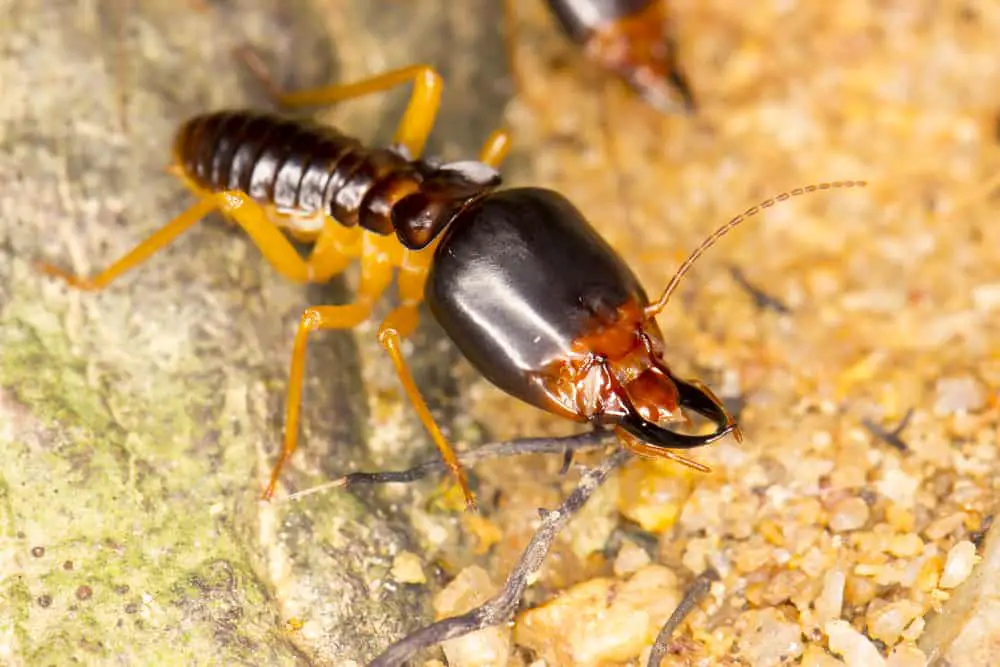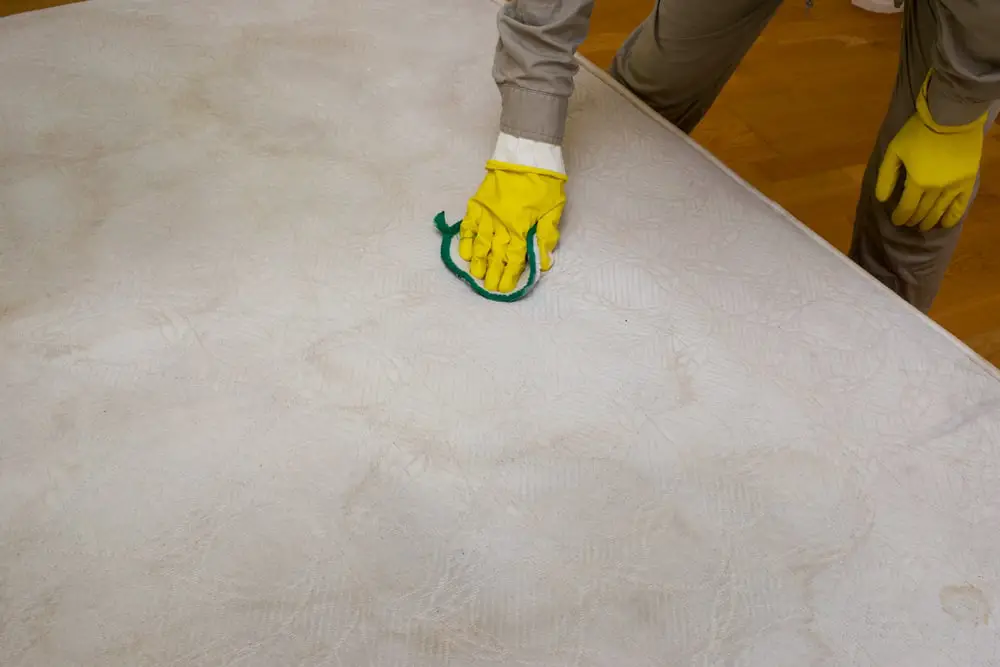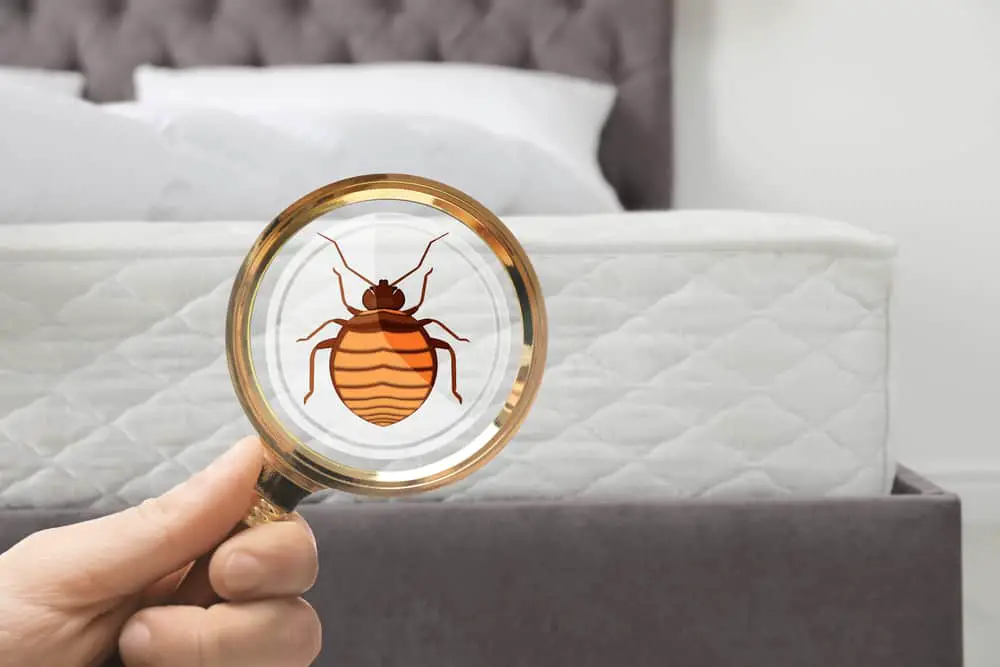While most of us automatically associate termites with wood, they’ll happily munch on other materials. Unfortunately, that can include your mattress and bed sheets (yikes!). Since cotton mattresses and bed sheets contain cellulose, something these insects thrive on, they can take up residence in your mattress while using it as food.
They’ll be even more attracted to the bed if the frame is made of wood, so the mattress and bed sheets are just an added benefit for them. This is disconcerting news, but read through this guide before you panic and toss the mattress. We review how to tell if you have termites in your bed and a few ways to evict them, so stick around to learn more!
Can Termites Live In Fabric?
Although termites happily eat fabric containing cellulose, they don’t usually take up residence here. They prefer to construct their colonies in wood and other furniture materials. So, good news – if you see a bunch of termites on an article of clothing or bed sheets, they probably aren’t living there.
Bad news – the termite colony probably resides nearby, in a nearby piece of furniture.
Can Termites Spread From Furniture?

Unfortunately, termites can spread from one piece of furniture to the next. This is especially common when moving furniture infested by termites, as the furniture may come into contact with other pieces of furniture as you move it out.
They may transfer from one piece to another when the furniture remains in contact with the other for a while, eventually infesting the second piece of furniture. So, if you have contaminated furniture, be careful not to leave it near other pieces of furniture, as the termites could take that as an invitation and move in there, too!
How Do You Tell If There Are Termites In Furniture?
Termites manage to go undetected for a while, as they usually stick to the insides of furniture. By the time you notice them, they’ve usually caused significant damage to the furniture in question. However, if you suspect your furniture might have termites, check for these telltale signs:
Look For Termite Wings
The swarmers shed their wings after landing when they find their new home. Termites travel in groups, consisting of over a dozen termites, so you might find piles of wings littered on and around the furniture. Check for wings on the furniture, the floor around the furniture, on nearby windowsills, and in spider webs (if applicable).
Drywood termites come in small swarms, so you might not notice the termites if you aren’t home when they arrive.
Inspect For Termite Droppings (Frass)
When termites consume wood, they get rid of the excess in their droppings, called “frass.” The droppings take on the same color as the wood they consumed, so if small droppings match the wood tone of your bed frame (or other furniture pieces), there are probably termites.
Check For Damage
Visually inspect the piece of furniture for damage. This can be tricky to do with a mattress, as it can seem to blend together. Look for sunken areas where there’s material missing, as this could indicate the presence of termites.
The same concept applies to other types of furniture, such as wood furniture. Look for key signs, like buckling paint, small holes, or sunken spaces throughout the inside of the furniture piece.
How Do You Get Rid Of Termites From A Bed?

Once you confirm the presence of termites in your bed sheets or mattress, there are a few ways to get rid of them. Here are a few of the best ways to kick out these unwanted visitors:
Sunlight
Termites prefer a warm, moist environment. If you disrupt these conditions, this should halt them in their tracks. So, use the sun to your advantage. If possible, maneuver your mattress in front of a window that receives direct sunlight.
Leave the mattress in direct sunlight for at least five hours, ensuring the mattress heats up in the sun. Avoid placing the mattress next to other furniture, though, as this could cause the termites to spread.
White Vinegar
White vinegar works wonders for various tasks, from household cleaning to tackling stubborn stains in your kitchen sink. Use it to your advantage in your fight against termites. You’ll need to buy a stronger concentration of vinegar, though, as the regular 3% grade won’t work.
Purchase white vinegar with a stronger concentration of acetic acid, then spray it over the infested areas. Clean your mattress after you’re done with a deep-cleaning furniture vacuum (you can usually rent these from various locations).
Borax And Boric Acid
Alternatively, use boric acid or Borax to kill the termites. Boric acid, commonly found in boric laundry powder, will evict your unwelcome roommates. Or, use Borax powder to kill the termites. Repeat the application every 2-3 days until the termites are gone.
Orange Oil
- POWERFUL HOME CLEANER AND DEGREASER. Medina’s Cold-Pressed Orange Oil is a perfect all-purpose cleaner! Our orange oil contains 98% D-Limonene, a naturally occurring and non-toxic solvent and…
- THOUSANDS OF PRACTICAL USES. Orange oil is an extremely versatile & powerful natural solvent. Use Orange oil to remove dirt, grease, oil, food, odors, ink, glue, crayon, soap scum, etc.
- COLD-PRESSED TO PRESERVE INTEGRITY. Heat is not used during the extraction process for the D-Limonene present in Medina’s Cold-Pressed Orange Oil. The cold-pressed technique preserves the degreasing…
This method works by sucking the moisture from a termite’s body. Orange oil has abundant d-limonene, which works wonders for removing termites from your bed, bedsheets, and pillow. Simply spray a liberal coating on the offending areas and let it do its work.
Pest Control Professionals
If the termites have spread throughout the furniture in your home, including your bed frame, bedsheets, mattress, and more, it might be best to call in a pest control professional. While the above DIYs work for small termite infestations, they might not do the trick for massive infestations.
On average, termite treatment costs range from $230 to $930, with the typical price falling around $575. Of course, the severity of the infestation, the size of your home, and where the infestation has spread will affect the final cost of the treatment.
Is It Safe To Sleep In A Bed With Termites?
While termites don’t usually harm humans, avoiding sleeping in a termite-infested bed is best. They aren’t known to carry diseases and typically don’t bite humans. If they do bite you, it usually leaves behind a mark similar to a mosquito bite. It may become itchy and leave a red bump on your skin, especially if you have sensitive skin.
Termite droppings aren’t hazardous or toxic, so they don’t present any threat on this front. If you unintentionally come into contact with termite waste, there’s no potential threat of infectious diseases.
Although sleeping in a bed infested by termites wouldn’t technically be harmful, you probably wouldn’t get the best sleep knowing they’re around you.



